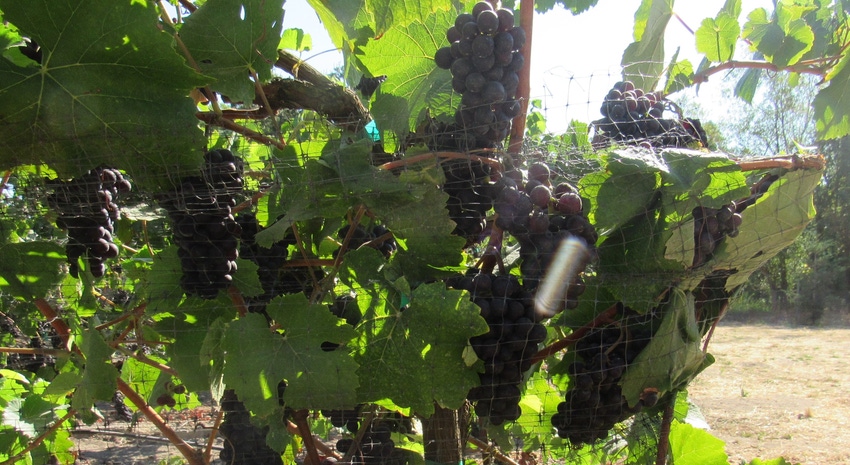
Somewhat overlooked in the post-harvest hubbub of a coronavirus-tainted holiday season was a University of California, Davis presentation dealing with the impact of climate change on Napa Valley grapes.
“Grapes are very responsive to their environment and certain places produce the best wine because those places have the ideal climate for certain kinds of grapes,” said Andrew Waterhouse, director of the university’s Robert Mondavi Institute. “Napa Valley right now is in the sweet spot for many varieties, like chardonnay and cabernet sauvignon, but how will wineries in Napa and other regions cope with these environmental changes?”
It’s a question of utmost importance to California’s $75 billion wine industry, a major producer of domestic wines that was severely impacted by wildfires prior to a harvest that saw some vintners skip a 2020 vintage over fears of smoke damage.
“Now we have to ask if wildfires in recent years are an aberration or part of a new normal with climate change having a profound effect on our wine country,” added UC Davis Chancellor Jerry May.
As part of the SAVOR lecture series exploring the effects of climate change on California’s premier wine region, the most recent theme revolved around how best to prepare for the future of growing varieties like chardonnay and cabernet.
“Although chardonnay has declined slightly over the last half century, it isn’t declining in terms of tonnage because there’s been more plantings in Napa , both for chardonnay and cabernet,” noted Elisabeth Forrestel, UC Davis Department of Viticulture and Enology, who researches vineyard adaptation to changing climates.
“2020’s record warmth is hard to grapple with relative to horticultural practices and the ability to make wine,” she said. “Beyond the warming itself, there were many attendant climate issues like drought, disease, water availability, and a fire system inextricably linked to climate-caused extreme heat events. Across the state, we’re seeing an increase in the number of heat waves (100 degrees for 3 days in a row) with dramatic increase in Napa Valley, moving outside what we’ve experienced before.
“The shift from having few or no heat waves to having six or nine per season can be dramatic when you consider what that means as far as field growing conditions and implications for plant physiology and wine chemistry.”
Rocky Mountain grapes
“One of my concerns,” says award-winning Larkmead Vineyards winemaker Dan Petroski,” is a quote I heard to the effect that, ‘By 2050, the best grapes in America will be grown in the Rocky Mountains.’
“For someone to say that in the near future, the best grapes will not be grown in Napa Valley was a bit of an affront to everything we’ve created here. We need to think about the next 20-30 years and how climate will impact Napa because we need to continue our dominance of being a great region. If we evolve, we’ll be in the forefront of growing the greatest grapes in the world.”
That said, Petroski called on his fellow winemakers to identify solutions to rising temperatures. He has done so by planting 37 grape varieties at Larkmead.
“Twenty five years ago, we had 30 acres of chardonnay alone,” he said. “Today, we have less than 5% of our vineyard, literally none. We built an entire community over cabernet during that time. That won’t be the case over the next 25 years.”
Also speaking was Esther Mobley, San Francisco Chronicle wine journalist, who suggested the region could be a little more flexible and nimble about what they grow. “Most of the wine-growing world understands the shift to warmer and more erratic, and we need to think about shifting with it,” she said. “The success of grape varieties in their idiosyncratic climates and soils requires a paradigm shift in terms of long-established regional identities. Perhaps there is a way to shift focus from chardonnay and cabernet to Napa Valley red wines as a brand.”
“Chardonnay and cabernet have a long life ahead of us, but expanding varietals is a smart idea," according to winemaker Petroski.
About the Author(s)
You May Also Like




